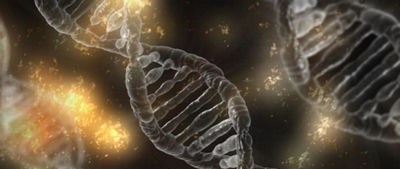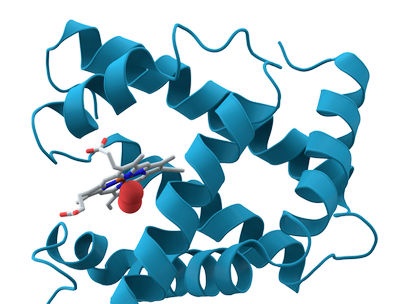|
 At first there was just biology - the science of living things. It arose a very long time ago, its experience is calculated not in years, not even centuries - millennia. Over time, it grew old, but did not become obsolete: many of the questions that biology was called upon to solve still remain unanswered. At first there was just biology - the science of living things. It arose a very long time ago, its experience is calculated not in years, not even centuries - millennia. Over time, it grew old, but did not become obsolete: many of the questions that biology was called upon to solve still remain unanswered.
Biology, like the cells of a living organism, was divided. Dozens of biological sciences were formed from the once unified science. More than 7 thousand biological journals are now published in the world.
Development went both in breadth and in depth. Along with new objects of research, new stages of cognition appeared. From classes to individual organisms; from them - to individual organs, and so, from large to small, biology came first to the cell, and then to its individual parts. It was here, in the cells, which are the structural units of which all life on earth consists, that one should look for the key to unraveling the protein synthesis code.
And it wasn't easy.
The microscope that once discovered the biology of the cell has, over time, exhausted its optical capabilities. The road of searching led into the depths of the cells, but the resolution of ordinary optics stood in the way of an insurmountable obstacle. A ray of light tore out individual large structures from the darkness of the unknown, but he did not notice, he simply could not physically notice those "little things" that eventually made an era in biology. At best, one had to guess about them.
But guessing doesn't mean seeing.
What the beam of light could not do, the beam of electrons did. The emerging electronic microscope pushed the boundaries of the invisible: for the first time, scientists were able to examine in detail the structure of the cell.
But seeing is not yet knowing.
 The electron microscope gave an almost posthumous picture: during preparation of the preparation, the cells died. And in order to know the cell, it was necessary to find out how it lives, to understand the mechanisms that govern its life. After all, ultimately, a cell is built of molecules, and its work is the work of molecules. It was here that that Rubicon appeared, in front of which biologists stood in indecision for many years. The electron microscope gave an almost posthumous picture: during preparation of the preparation, the cells died. And in order to know the cell, it was necessary to find out how it lives, to understand the mechanisms that govern its life. After all, ultimately, a cell is built of molecules, and its work is the work of molecules. It was here that that Rubicon appeared, in front of which biologists stood in indecision for many years.
Molecules are the domain of chemistry; therefore, one should speak with them in their language - in chemical. Methods for studying purely biological objects were not suitable for new problems; new ones had to be created. And for this, in turn, it was necessary at least two conditions: to decide to "descend" to the molecular level and to know chemistry.
And yet, at the beginning of our century, the Rubicon was crossed, although not yet in a cage. The first biological processes to be interpreted from a molecular standpoint were two of the most important vital acts: photosynthesis and respiration. These two processes, in the figurative expression of Academician V.A.Engelgardt, stand at two opposite ends of an immensely long chain of chemical transformations, from which, ultimately, the existence of the living world is formed. Photosynthesis carried out by chlorophyll molecules binds solar energy with carbon and hydrogen molecules, giving living organisms not only the energy necessary for their activities, but also raw materials. Breathing (in which hemoglobin molecules actively participate) releases what was stored up during photosynthesis: energy ooze? to maintain life, and hydrogen and oxygen return to the world of inanimate nature.
These were the first signs of molecular biology. Soon, the chemical nature of another most important vital function, the transmission of a nerve impulse, was clarified: here, too, the main actors were the molecules of chemical substances - acetylcholine and cholinesterase.
Finally, the molecular basis of movement was revealed - one of the main manifestations of life.The contraction of the muscle was the result of the interaction of two molecules - actomyosin protein and adenosine triphosphoric acid, which will be discussed later.
Sequentially, one by one, the veils of mystery fell from elementary life processes, the essence of the phenomenon was revealed; and each time the truth was brought closer to us by a new approach to the problem - biological events were considered as a result of chemical interactions.
This approach gradually became a tradition.
 However, much still remained unclear. And first of all, the mechanism of transmission of heredity. Only an apple tree will be born from an apple tree; instead of liver cells, brain cells are never formed. Each new generation of cells is similar to its ancestors, it inherits their traits, their characteristics. And since life is a form of existence of protein bodies, its diversity is associated primarily with the diversity of proteins. However, much still remained unclear. And first of all, the mechanism of transmission of heredity. Only an apple tree will be born from an apple tree; instead of liver cells, brain cells are never formed. Each new generation of cells is similar to its ancestors, it inherits their traits, their characteristics. And since life is a form of existence of protein bodies, its diversity is associated primarily with the diversity of proteins.
And therefore, the problem of heredity, at the molecular level, rests on the synthesis of specific proteins responsible for certain properties of the organism.
And although for the first time this aspect of cell life appeared before biology as an independent problem more than 100 years ago, and scientists took their first timid steps along the road of hypotheses in the 50s of the nineteenth century, to exclaim "Eureka!" they were able only in the second half of the twentieth. Modern biology is a crossroads where the interests and methods of biologists, physicists, chemists, mathematicians themselves collide. Only their joint efforts can bring the desired results. People are needed for this. This requires ideas. This requires a technique. Finally, it takes time.
History has let him go - perhaps even too generously. We've waited too long for the outcome. But we waited for her.
There is one less secret in the world. One less secret in the cage. Scientists entered a fortress called protein synthesis. The fortress had to be taken by storm. First, a "Trojan horse" was sent to it - a hypothesis in code. Over time, confirmed by numerous experiments, the hypothesis made more than one breach in the fortress. New ideas immediately rushed into them. They consolidated what had been achieved, developed the offensive, conquered new frontiers.
And finally, the day came, or rather the year, when the expected came true. The tendency in molecular biology to view biological phenomena as a consequence, and the interaction of molecules as their cause, has once again borne fruit. And this time they are especially generous.
Azernikov V.Z. - The solved code
|
 At first there was just biology - the science of living things. It arose a very long time ago, its experience is calculated not in years, not even centuries - millennia. Over time, it grew old, but did not become obsolete: many of the questions that biology was called upon to solve still remain unanswered.
At first there was just biology - the science of living things. It arose a very long time ago, its experience is calculated not in years, not even centuries - millennia. Over time, it grew old, but did not become obsolete: many of the questions that biology was called upon to solve still remain unanswered. The electron microscope gave an almost posthumous picture: during preparation of the preparation, the cells died. And in order to know the cell, it was necessary to find out how it lives, to understand the mechanisms that govern its life. After all, ultimately, a cell is built of molecules, and its work is the work of molecules. It was here that that Rubicon appeared, in front of which biologists stood in indecision for many years.
The electron microscope gave an almost posthumous picture: during preparation of the preparation, the cells died. And in order to know the cell, it was necessary to find out how it lives, to understand the mechanisms that govern its life. After all, ultimately, a cell is built of molecules, and its work is the work of molecules. It was here that that Rubicon appeared, in front of which biologists stood in indecision for many years. However, much still remained unclear. And first of all, the mechanism of transmission of heredity. Only an apple tree will be born from an apple tree; instead of liver cells, brain cells are never formed. Each new generation of cells is similar to its ancestors, it inherits their traits, their characteristics. And since life is a form of existence of protein bodies, its diversity is associated primarily with the diversity of proteins.
However, much still remained unclear. And first of all, the mechanism of transmission of heredity. Only an apple tree will be born from an apple tree; instead of liver cells, brain cells are never formed. Each new generation of cells is similar to its ancestors, it inherits their traits, their characteristics. And since life is a form of existence of protein bodies, its diversity is associated primarily with the diversity of proteins.









